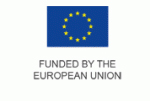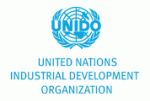shea-nut-profile
November 25, 2023
SHEA NUTS AND SHEA BUTTER
Product Name: Shea kernels and Shea Butter
Botanical name: Vitellaria paradoxa formerly called Butyrospermum parkii
HS Code: 120792/23069090 and 33049990
Brief Product Description:
Shea nut is grown on a tree of the family Sapotaceae. The shea fruit consists of a thin, tart, nutritious pulp that surrounds a relatively large, oil-rich seed from which shea butter is extracted. It is a deciduous tree usually 7–15 m (23–49 ft) tall, but has reached 25 m (82 ft) and a trunk diameter of 2 m (6.6 ft).
The Shea kernels are used for the production of shea butter which is much sought after all over the world. Shea nut cake is obtained after the extraction of the butter and is increasingly used for livestock and poultry feed.
Shea butter is a fat (triglyceride, mainly oleic acid and stearic acid) extracted from the nut of the African Shea tree (Vitellaria paradoxa). It is ivory colour when raw. It is widely used in cosmetics as moisturizer, salve or lotion. Shea butter is edible and is used in food preparation in some African countries. The bulk of shea kernels and butter is mixed with other oils as a substitute for cocoa butter.
Early Shea butter commerce can be tracked in ancient Egyptian trade as an apparently abundant vegetable oil during the reign of King Merenre, approximately 4300 years before present date (BPD) from the Land of yam or Punt. These locations could be in what is now Sudan and Uganda towards the source of the Nile River or in Chad.
The shea tree is a traditional African food plant. It has been claimed to have potential to improve nutrition, boost food supply in the “annual hungry season”, foster rural development, and support sustainable land care.
Major Producing Areas:
| · Niger
· Kwara · Kebbi · Kaduna · Katsina · Nasarawa · Kogi · Oyo · Ogun · Taraba · Yobe · Borno · FCT
|
· Plateau
· Benue · Bauchi · Jigawa · Edo · Sokoto · Gombe · Kaduna · Kano · Enugu · Adamawa · Zamfara
|
Major commercial activities are concentrated in Niger, Kebbi and Kwara States.
Packaging:
Shea butter is packaged in clean, airtight containers. It can be plastic containers, jars or tins. Labeling of the shea butter with relevant information is necessary. Cartons and boxes are used to transport the packaged shea butter to retail outlets.
Estimated production Figure:
Africa produces about 1,760,600 tonnes of raw shea nuts annually. However, more than half of this value is used in domestic applications. Tridge states that Nigeria and Mali are the largest producers of shea kernels in Africa. In 2019, Nigeria accounted for more than 39% and Mali accounted for almost 31% of global shea nuts production. The majority of shea butter produced in Nigeria is for domestic consumption. There is also undocumented trade of shea nuts across the country’s borders with Benin, Togo and Ghana.
There is however a growing investment in processing facilities in Nigeria. This is expected to have an effect on the trade dynamics of shea products in West Africa. There is a general trend of moving from export of raw materials to processing in most West African countries. It is expected that more processing will take place in Africa in the near future. https://www.researchgate.net/publication/331210100_African_Journal_of_Biochemistry_Research_Shea_butter_extraction_technologies_Current_status_and_future_perspective
Types of Shea Nuts:
In Africa, there are two dominant species of shea nuts the Vitellaria paradoxa and Vitellaria nilotica. Vitellaria paradoxa is dominant and found in West African countries Such as Nigeria, Ghana, Cote d’Ivoire, Burkina Faso, and some other countries. Vitellaria Nilotica is found mainly in Uganda. The West African type has better consistency, works well in most formulations and is not too soft. It also has a higher melting point, greater concentration of sterol and Vitamin A, and a lower concentration of oleic acid when compared with the East African shea butter.
- Grade A: This is the highest quality of shea butter produced form high quality nuts, it has smooth texture, yellow in colour and mild nutty fragrance.
- Grade B: This is produced form lower quality shea nuts and has a grainy texture and a darker colour.
- Unrefined: This is the purest form of shea butter, extracted with no chemicals or preservatives.
- Refined: This is processed to remove impurities and other substances hence it is smoother in texture and lighter in colour.
- Ultra Refined: this is the most processed shea butter which is stripped of all natural nutrients and compounds.
Quality Standard issues:
- lack of storage facilities for the kernel and butter
- Poor quality butter produced
- Lack of modern processing technology
- Poor infrastructural facilities like road, electricity and water.
Uses:
- Chocolate, pastries and confectionery (as cocoa butter substitute)
- Cosmetics and body creams
- Soaps
- Margarine
- Cooking oil
- Baking fat
- Candies
- Pharmaceuticals
Importing Countries:
China is the leading importer of Shea butter.
Export potential of Shea:
The markets with greatest potential for Nigeria’s shea exports are Netherlands, Germany,



